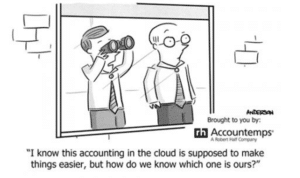Accountant jokes are not in short supply. Heard the one about why the accountant was thrilled to have completed a jigsaw puzzle in 59 weeks? Because on the box it said 8-12 years. Yes. And what do you call a payroll accountant without a spreadsheet? Lost.
Accounting has a reputation of being dry, but when it comes to money, you had better know your debits from your credits. In Payroll you must have a thorough understanding of how accounting works. We work to strict budgets, rigid and rigorous rules and standards, with possibly the greatest responsibility in any organisation resting on our shoulders. If we fail, people suffer. And that’s not a laughing matter.
What is payroll accounting?
Payroll accounting is a company’s record of employees’ compensation. This includes
- Gross wages, salaries, bonuses, commissions and anything else earned by employees.
- Withholding of payroll payments. Normally this would be taxes, but also includes things like social security insurance, medical insurance, pension and other benefits offered by the government or third parties.
- The employer portion of employee expenses (like a pension) and fringe benefits, as well as paid holidays, sick days, savings plan contributions, and more.

Payroll transactions start with journal entries, the book of original entries where financial transactions are initially recorded in chronological order before they are transferred to the ledger accounts.
Posting of transactions is the procedure of transferring journal entries to the General Ledger (GL). These should be done on a regular and timely basis to keep the ledger up to date.
The GL contains the entire group of accounts that the company maintains. Your individual journal entries are posted into the ledger to record each transaction.
So, to simplify, the process of accounting for payroll activities is:
- Journal
- Posting
- GL
The main types of accounts you may come across in a GL are:
- Asset accounts – cash, accounts receivable, fixed assets.
- Liability accounts – accounts payable, short-term payables, long-term debt.
- Capital account – these are the retained earnings.
- Revenue accounts – sales and fees.
- Expense accounts – salaries and wages expenses, utility expenses, depreciation expenses.
- Other gains and losses accounts – interest expenses, investment income, loss or gain on disposal of assets.
Know your left from your right
In Accounting, the left side of a ledger entry is called the Debit side (Dr) and lists all debit transactions, all the amounts the company owes, or the value that the company has received. The right side is called the Credit side (Cr) and are all the amounts the company owns, or values the company has parted within a given period.
Purchases, expenses, and assets increase on the debit side, while a decrease in these accounts is lodged on the credit side. Reversely, increases in receipts, liabilities, sales, and capital are credits, while decreases in these are represented on the debit side.
For every single debit, you have a corresponding credit entry and vice versa. The one entry (depending on the type of account) will show what the company has used the money for, and the other entry shows where the company has taken the money from within the business to pay for this activity.
Expenses, liabilities and assets
In Payroll we typically use expense, liability and asset accounts. For example, gross wages are expenses, the payroll bank account is an asset, and amounts the company need to pay over, like pension or tax payments, are liabilities.
By way of an example, the double entry for gross wages in the journal is Wages Expenses debit, and Wages Control credit. The gross wages are a company expense or money the company will part with and is therefore represented as an expense, or credit, in the GL.
But all other entries in the wages control account would be debited. For example, you will pay Net Wages to the employees by debiting Wages Control and crediting Bank. Payment of Pensions will also be debited in the Wages Control account and credited as a Pensions Liability.
Here is the example in numbers:
| Transaction | Account | Dr | Cr |
| Gross Wages Expenses | Wages Expenses | AED600,000 | |
| Wages Control | AED600,000 | ||
| Net Wages | Wages Control | AED400,000 | |
| Bank | AED400,000 | ||
| Pension Deduction | Wages Control | AED200,000 | |
| Pension Liability | AED200,000 |
Also remember that the debit and credit sides must add up to the same total. In our example, Net Wages and Pension Liability are the only two components of the Gross Wages and should add up to AED600,000 to balance with the Wages Control credit entry.
Now, did you hear the one about the new accountant offered an attractive starting salary? “How can a business like yours afford to pay me so much?” he asked. “That,” the boss replied, “is your first worry.”
Want to know more about how OPS can help you with your Payroll?